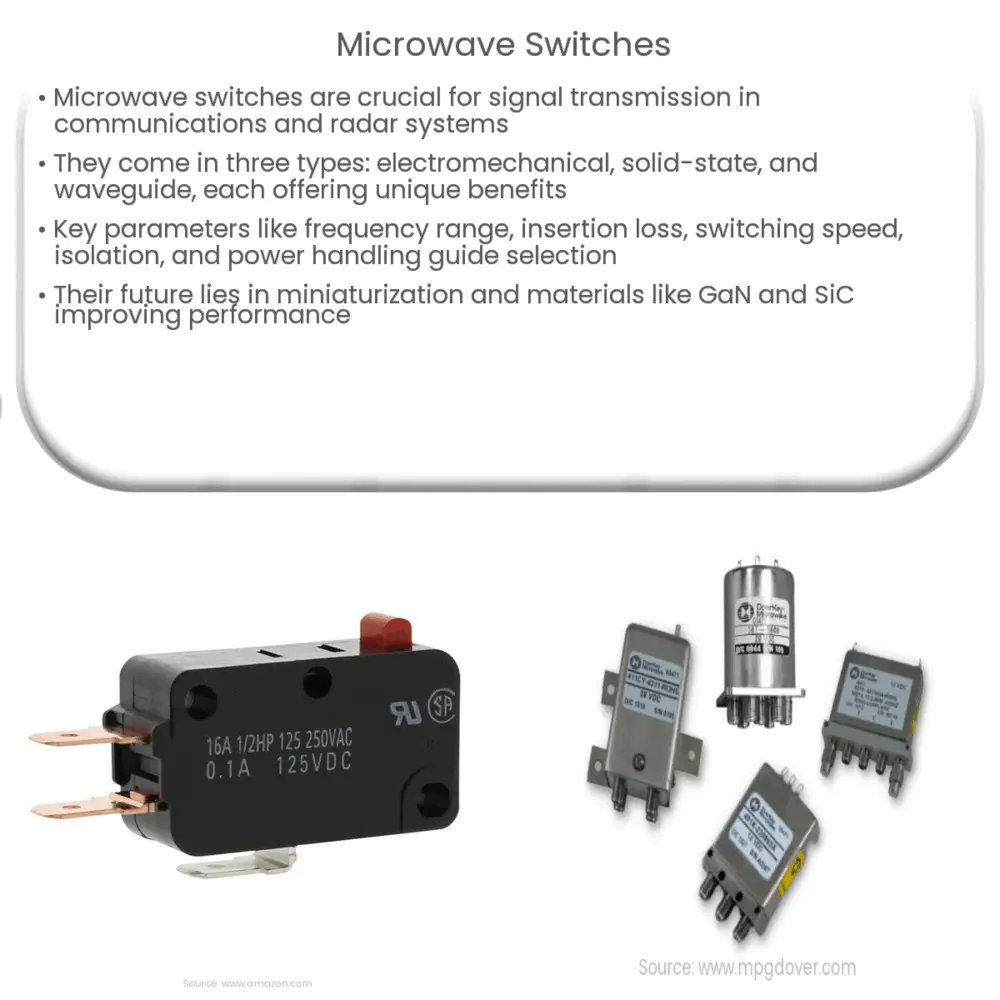Explore the fundamentals of microwave switches, their types, key parameters, applications, selection criteria, and future prospects in our comprehensive guide.

Understanding Microwave Switches
Microwave switches are fundamental components in microwave communication systems and devices. They allow for the seamless transmission and routing of signals in the microwave frequency range. Microwave switches are essential for a variety of applications, from cellular networks and satellite communication to radar systems and scientific research.
Types of Microwave Switches
- Electromechanical Switches: This type of switch utilizes mechanical movement to change the switch position. The common types of electromechanical switches include toggle, rotary, pushbutton, and selector switches. They are typically known for their durability, high power handling, and excellent isolation characteristics.
- Solid-State Switches: These switches do not involve any mechanical movement. They operate by controlling the charge movement in a semiconductor. The two common types of solid-state switches are PIN diode switches and Field Effect Transistor (FET) switches. They offer advantages in terms of their speed, size, reliability, and integration with other circuit elements.
- Waveguide Switches: These switches are used to direct microwave signals along different paths within a waveguide structure. Waveguide switches are commonly employed in high-frequency applications due to their superior power handling and low insertion loss.
Key Parameters of Microwave Switches
In selecting a microwave switch, several important parameters need to be considered. The first is the frequency range, which refers to the range of frequencies that the switch can handle. This value should be in line with the system’s operational frequency. The insertion loss, which measures the signal strength reduction when a signal passes through the switch, is another critical parameter.
The switching speed refers to the time it takes for the switch to change from one state to another. This is crucial in systems requiring fast signal routing or modulation. The isolation measures the extent to which a closed (or “off”) path can prevent signal leakage. High isolation is desirable to minimize interference in the system.
Lastly, power handling defines the maximum power that can be applied to the switch without causing damage. This is especially important in high-power applications.
To be continued…
Microwave Switch Applications
Microwave switches find extensive use in a range of modern technological applications. Here are some notable ones:
- Telecommunications: Switches are critical in cellular communication systems and satellite communication equipment for routing microwave signals accurately.
- Radar Systems: Radar systems rely heavily on microwave switches for transmitting and receiving signals.
- Scientific Research: In the research field, microwave switches are used in experiments requiring high-frequency signal transmission.
- Test Equipment: Microwave switches are also integral to testing equipment in labs and industries, helping to route signals through various testing components.
Choosing the Right Microwave Switch
When selecting a microwave switch, one must align the characteristics and capabilities of the switch with the intended application’s requirements. Key factors to consider include the switch’s frequency range, isolation, insertion loss, switching speed, and power handling capability. The choice between electromechanical, solid-state, and waveguide switches will largely depend on these parameters and the specific use case.
Future of Microwave Switches
The future of microwave switches lies in the ongoing miniaturization and integration of electronic components. Solid-state switches, with their small size and ability to be integrated into complex circuit designs, are likely to play a significant role. New materials and technologies, such as gallium nitride (GaN) and silicon carbide (SiC), promise to improve the performance characteristics of these switches, paving the way for more efficient and powerful microwave systems.
Conclusion
In conclusion, microwave switches play a vital role in modern communication systems, scientific research, and testing equipment. Their ability to route and control signals at microwave frequencies makes them indispensable components in these fields. As technology advances, the continuous refinement and enhancement of microwave switches promise a future with more efficient and versatile microwave systems.

